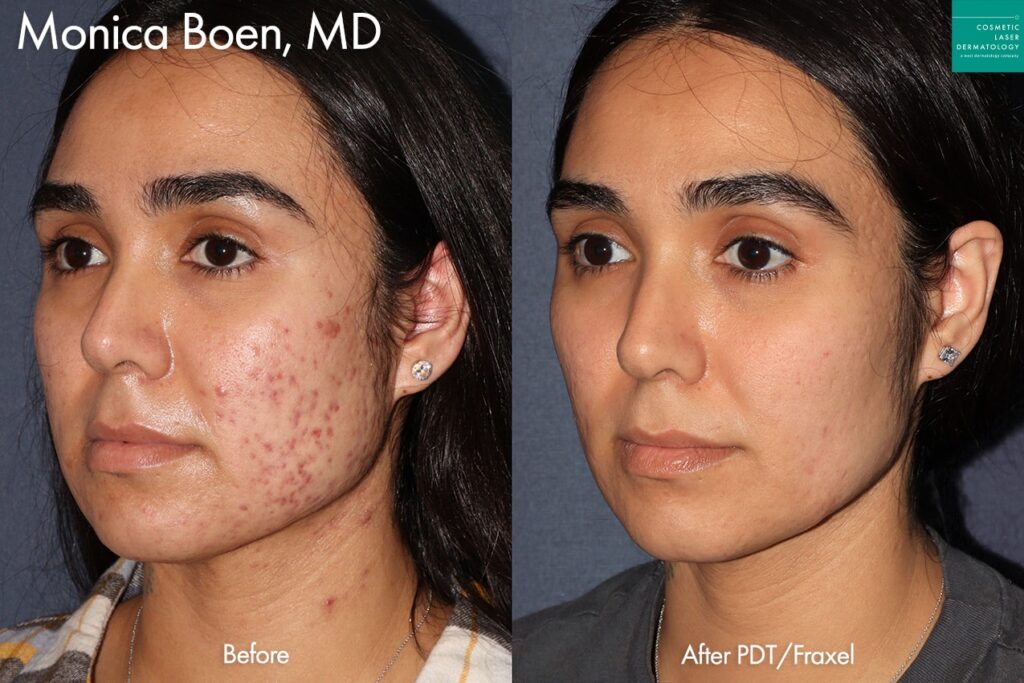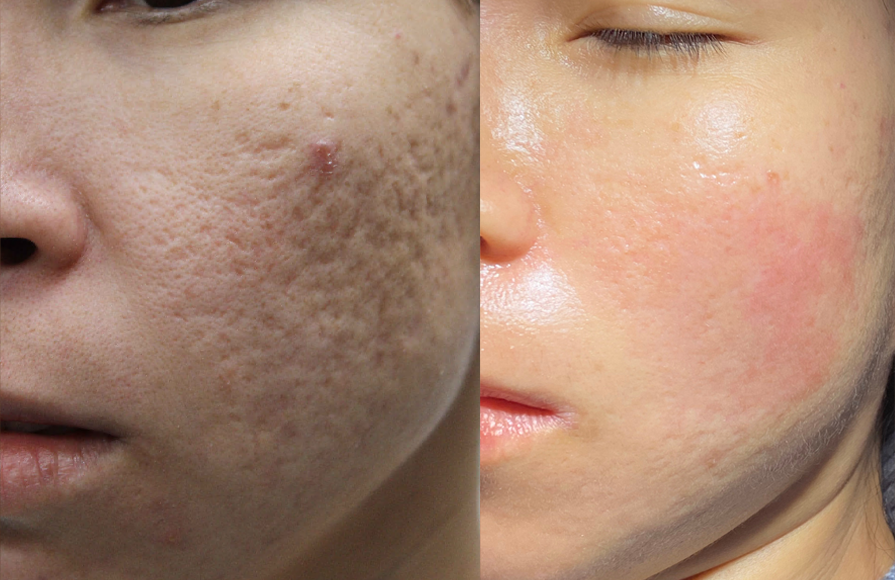Best Acne and Acne Scars Treatment: Restore Your Skin's Natural Beauty
Best Acne and Acne Scars Treatment: Restore Your Skin's Natural Beauty
Blog Article
Checking Out Skin Conditions: Determining and Treating Acne Scars for Healthier Skin
Acne scars stand for a considerable worry for individuals seeking to maintain healthy and balanced skin, as they can affect both look and self-esteem. Recognizing the numerous types of scars, from atrophic to hypertrophic, is essential for establishing suitable treatment options.
Recognizing Acne Marks
Comprehending acne marks is vital for anybody who has actually experienced extreme acne, as these marks can have an enduring influence on both physical look and psychological health. Acne scars develop when the skin undertakes inflammatory reactions throughout energetic acne lesions. The seriousness of scarring is usually influenced by elements such as the type of acne, its period, and specific skin characteristics.
The body's natural healing process can lead to either atrophic marks, which show up as clinical depressions in the skin, or hypertrophic marks, which are raised and result from overproduction of collagen. Furthermore, the mental toll of acne marks must not be taken too lightly; many individuals report feelings of humiliation, stress and anxiety, and reduced self-worth. This psychological burden can affect social interactions and general top quality of life.
Dealing with acne marks calls for a comprehensive understanding of their formation and influence. Understanding of the capacity for long-lasting repercussions connected with without treatment scars can inspire individuals to look for proper treatments. Early intervention and effective management approaches can significantly boost skin look and improve mental resilience, stressing the relevance of comprehending the complexities surrounding acne marks.
Types of Acne Scars
Acne marks can be classified into distinctive kinds, each displaying unique qualities and calling for details therapy techniques. The primary sorts of acne scars include atrophic, hypertrophic, and keloid marks.

Hypertrophic marks, in contrast, are increased above the skin level and are the outcome of too much collagen production during the recovery procedure. They normally stay within the borders of the initial acne lesion. Keloid marks are similar however expand past the initial injury site, forming larger, increased locations that can be scratchy or agonizing.
Comprehending these sorts of marks is crucial for selecting ideal therapy alternatives. Different scars might respond better to details treatments, such as laser therapies, fillers, or medical treatments, highlighting the importance of a customized technique to acne mark monitoring.
Identifying Your Scars
When examining the appearance of your skin, it is vital to properly determine the kind of scars present, as this will inform the most reliable therapy method. Acne scars generally come under 2 classifications: hypertrophic and atrophic scars. Atrophic scars, which are the most usual, show up as anxieties or imprints on the skin. These can even more be classified right into ice-pick marks, boxcar scars, and rolling scars, each showing unique attributes and requiring different strategies for evaluation.
Hypertrophic marks, on the other hand, are elevated and happen as a result of extreme collagen production throughout the healing procedure. Recognizing the certain features of your marks-- such More Info as depth, size, and texture-- is important for correct identification. Additionally, think about the circulation of marks throughout your skin, as this can show the seriousness and duration of the acne condition.
Involving with a skin doctor can give useful understandings into the nature of your marks, aiding in the distinction in between various types. A comprehensive understanding of your marks will inevitably result in a much more customized and effective treatment strategy, making certain a clearer and healthier skin tone.
Therapy Alternatives Available
Determining the certain sort of acne scars present on your skin prepares for discovering reliable therapy options. Common types of acne scars consist of atrophic (clinically depressed), hypertrophic (elevated), and post-inflammatory erythema.
For atrophic marks, options such as chemical peels, microneedling, and laser resurfacing are widely used. Chemical peels utilize acids to remove the outer layer of skin, promoting new cell development.
Hypertrophic marks can be treated with corticosteroid shots to squash the mark or laser treatment to decrease redness and improve look. acne scars. Silicone gel sheets and pressure dressings might additionally help in handling increased scars
In addition, facial fillers can momentarily complete clinical depressions from atrophic scars, while surgical excision might be ideal for extreme situations. Each treatment option has its advantages and factors to consider, making it important to speak with a skin doctor. They can give individualized suggestions based on the kind and extent of your marks, as well as your skin type and total wellness.
Tips for Avoidance
Efficient prevention techniques can dramatically minimize the chance of establishing acne scars. Using non-comedogenic products helps avoid clogged pores, which can aggravate acne.
Staying clear of the urge to select or stand out acne sores is essential, as this can result in much deeper skin damages and increase the threat of scarring. Instead, take into consideration utilizing a chilly compress or over the counter treatments to decrease swelling and inflammation.
Sun protection is an additional crucial facet of avoidance; ultraviolet (UV) rays can darken marks and impede the healing process. Using a broad-spectrum sun block with at the very least click this SPF 30 daily can safeguard the skin and advertise also recovery.
Finally, maintaining a well balanced diet plan rich in antioxidants, minerals, and vitamins sustains skin health and recovery. Remaining moisturized and managing stress degrees can likewise play a considerable function in lowering acne flare-ups. By carrying out these strategies, people can dramatically decrease their possibilities of creating acne marks.

Verdict
Finally, understanding and identifying discover this info here acne marks is important for effective therapy and accomplishing much healthier skin. Numerous types of acne marks, consisting of atrophic and hypertrophic scars, necessitate certain treatments customized to individual demands. Therapy choices array from chemical peels and microneedling to corticosteroid shots, stressing the importance of seeking advice from a dermatologist. In addition, adopting a gentle skin care routine and safeguarding the skin from UV exposure can considerably add to the avoidance of further scarring and total skin health.
The body's natural healing process can result in either atrophic scars, which appear as anxieties in the skin, or hypertrophic marks, which are elevated and result from overflow of collagen. They are additional separated into three subtypes: ice choice marks, boxcar scars, and rolling scars. Acne scars normally drop into two classifications: hypertrophic and atrophic marks. These can better be categorized right into ice-pick marks, boxcar scars, and rolling marks, each showing unique features and needing different methods for assessment.
Numerous types of acne marks, including hypertrophic and atrophic marks, demand certain treatments tailored to specific requirements.
Report this page